Tropical Forestry Erasmus+ / Internship at Forêt de Mare Longue
As part of the Forest and Nature Management specialisation Tropical Forestry at Van Hall Larenstein University of Applied Sciences, I went on a five-month Erasmus+ internship to the island of La Réunion. This internship lasted from September 2021 till February 2022, and I stayed at the Mare Longue Research Station for the entirety of its duration. Unfortunately, due to the pandemic, all excursions abroad during my studies where cancelled, meaning I had little experience of working in a tropical country. Luckily, I was able to find a great place for my internship where I could experience everything that was lacking from my studies. I wanted my internship to be educational but also impactful to the local nature of La Réunion, which is why I participated in the ECOFORRUN project. ECOFORRUN is run by Sébastien Albert and aims to restore Forêt de Mare Longue, the last remaining primary lowland rainforest of the Mascarenes, that has been affected by animal extinctions, invasive species, and other habitat disturbances. As part of the ECOFORRUN project, my job was to collect diaspores of many focal plant species in preparation for field experiments, help with invasive plant weeding, site prospections, seed cleaning, and sowing of field experiments.
During this internship I also conducted research on the viability of Ficus seeds. Due to their asynchronous fruiting cycle, high fruit yield, and other unique factors, Ficus are a cornerstone species in their respective ecosystems. They play a big role in supporting the local frugivore community and are therefore important to use in tropical habitat restoration efforts such as ECOFORRUN. Unfortunately, low germination rates have been observed worldwide and no information is available on their recalcitrancy when in storage. To hopefully improve germination success for future restoration efforts my research aimed to answer the question: are the seeds of native Ficus species in La Réunion recalcitrant over a storage period of three months? Unfortunately, due to their asynchronous fruiting cycle, I was only able to test the seeds of Ficus densifolia, but the results were still interesting nonetheless and showed that the seeds are indeed recalcitrant after a period of two months in storage.
The internship was a great experience that I thoroughly recommend to anyone. The Mare Longue Research Station is a lovely place to stay, especially thanks to the caretaker Jimmy Turpin who generously gave me fresh fruits or vegetables from the garden and showed me around many times. I will miss the peace and quiet of the surrounding area and the ocean that is just a minute walking away. All in all, my stay in La Réunion expanded my horizons in many ways and I will fondly think back of this time wherever I end up next.
~ Mathijs Megens
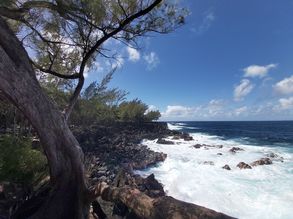
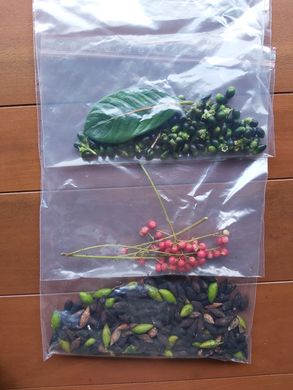
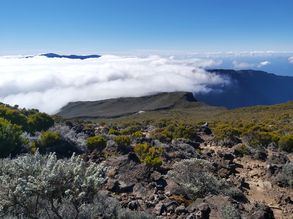
Internship at the field station of Mare Longue
A 2 months internship at the research field station/UMR PVBMT
" After I completed my bachelor degree in Germany last year, I decided to take a year off studying before I will continue with my master programme in ecology in September. I wanted to dedicate this time to gain practical experiences in ecology and orientate myself for a possible specialisation within my masters.
During these COVID-times I was very lucky to get accepted for an internship at the Mare-Longue research station for two months and joined Joosep Sarapuu (Erasmus student, University Sarapuu) and other Réunion students for the research on the invertebrate diversity of the Mare-Longue rainforest in mid-January to mid-March.
It was our aim to monitor the current species diversity along the gradient of plant invasion within four different plots of the rain forest, to later understand the impact of invasive plants for the local ecosystem. Our tasks ranged from field and lab work to general and organisational things that need to be done for species preservation. We went out to the forest to catch insects through so called “light trapping” and “beating” methods. These were probably the most special experiences I had during my working times here - catching insects at night and walking through the very dark and plant rich forest. We also used trapping methods like a “SLAM”, leaf litter and ant traps to cover as many ecological niches as possible and also went out to install the traps ourselves and collect the caught organisms.
After collecting the samples, we used a microscope back at the station to identify the order (taxonomy) of the different animals as well as putting them in an order for further identification. When I arrived, we were four interns working on the project and it was a positive experience to work together with other young and motivated people that are fascinated by nature. It then revealed to be not only work, but also fun and we sometimes even worked late in the night together.
We could completely work with our own pace and manage our time which is a very important skill to learn. We worked and lived in the research station and it was very enrichening to only focus on the necessary things with a life-style quite different to home or studying. On the weekends we could go on trips together to discover the island, and there are some memorable experiences that I will happily remember in the future.
I have also, of course, fallen in love with this island and immediately planned to prolong my stay. I feel like the people here are pleasantly relaxed, as well as open-minded and genuinely friendly. The environment is fantastic and diverse and there are so many ways to experience nature and also the island’s culture. It is quite a different climate here to what I am used to in Germany and so I am extremely thankful to have gained so many valuable experiences.
I would really encourage interested people in going out and joining a research project, maybe abroad and maybe here at the Mare-Longue research station on La Réunion."
Rebecca Lippert, University of Bonn, Germany
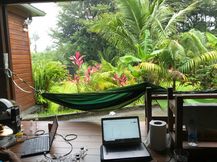
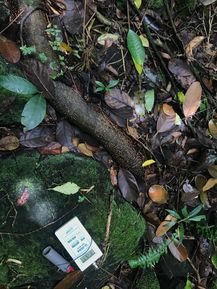
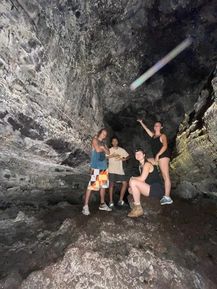
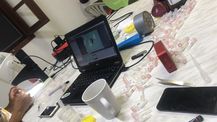
Internship Erasmus - Joosep Sarapuu, University of Tartu, Estonia
" I arrived in Réunion island in December 2020 and stayed 3 months. I wanted really do to a practical field work and I wanted to do it in tropics and Réunion seemed like a paradise for it. Tropical volcanic island with a beautiful nature, diversity in culture and animal species, a lot of endemism and as well as good food and relaxing beaches. And it is fully Europe. Awesome. Even though I did not have field work at the beginning of my stay I have a chance to look at the diversity already from microscope. A lot of small and incredible insects were my partners. Of course, I then had a chance to look around and go into the forest as much as I wanted, because I was staying in a little research field station in St Philippe, just, near the last remnant of lowland rainforest in this island. The research station was very nice. Small, quiet, near the sea and forest with a lot of trees and wildlife. You could see agamas and chameleons just in front of the station and try bananas directly from the tree. It had all what I needed. Nice bedrooms, bathrooms and equipped kitchen, as well as good internet.
Of course, the best part was field work, which was very cool. We set up the SLAM (Sea, land and Air Malaise)traps and collected insects from the lowland forest, we did ant trapping with tuna and starch, collected leaf litter and also did a daytime and night time beating. It was very nice and to try here different methods that I have used to do. A little bit adventure and also fun, because I could do it with very cool students that I can now call friends. And for me the highlight was a light trapping for 2 nights with the entomologists who knew these things really well. It was nice to hear their experience and stories. And after that we needed to see the insects with microscope and see the beauty of them. And as much as I can say now we found a new spider to Réunion island.
It was very awesome experience and Erasmus practical work. Get to do a field work in tropics, meet cool people and of course had a free time to look around and enjoy the beauty of this island."
Joosep Sarapuu,
University of Tartu, Estonia
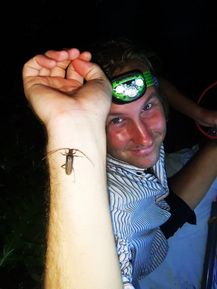
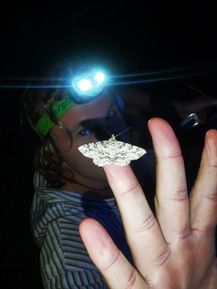
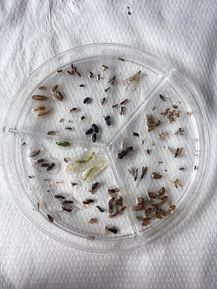
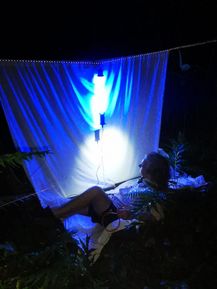
Sample week Master's Students
From 4 to 8 February 2019
Sample of Marelongue Forest
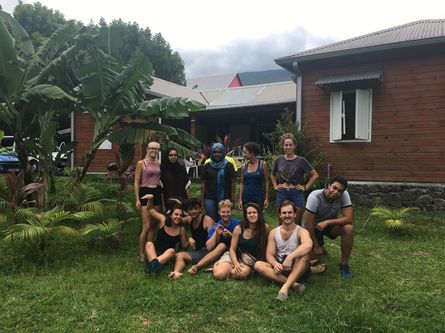
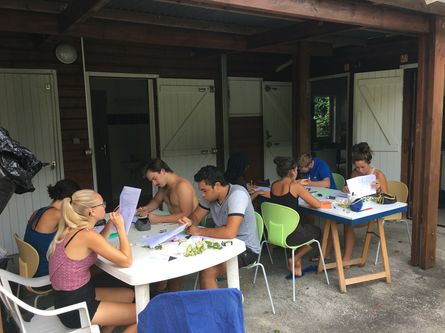
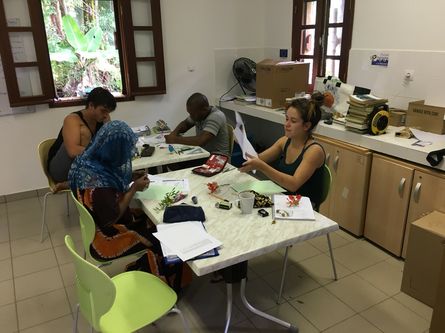
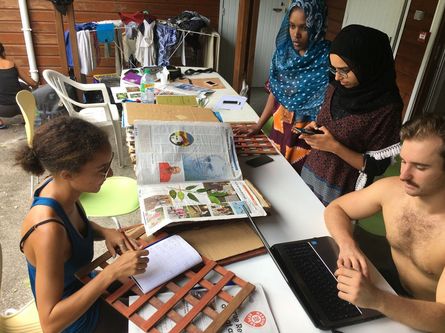
Stage de Master 1 : Variation de la résistance des bryophytes à la dessiccation à l’échelle du microhabitat au sein d’une forêt tropicale de montagne
Étudiante en première année de master Biologie Écologie Évolution parcours Biodiversité végétale et Gestion des Écosystèmes Tropicaux à l’Université de Montpellier et AgroParisTech, j’ai effectué un stage de quatre mois, du 26 mars au 27 juillet 2018, au sein de l’Unité Mixte de Recherche Peuplements Végétaux et Bioagresseurs en Milieu Tropical (UMR PVBMT) sur l’île de La Réunion. Cette étude a pour objectif de mieux comprendre comment des espèces de bryophytes réagissent face à la dessiccation en réponse à de futurs changements climatiques dans la forêt de nuages (TMCF = Tropical mountain cloud forests) de l’île, à une altitude moyenne de 1300 m. Cet écosystème, caractérisé par la présence fréquente de brouillard, est très menacé par la hausse des températures et par la déforestation. Les bryophytes font parties des groupes de plantes les abondants dans ce type de forêt et contribuent ainsi à leur équilibre hydrique, d’où l’importance de leur étude.
Ce stage s’inscrit dans le projet « Cloud Layer tempErature inVersion and vEgetation in La Réunion » (CLEVER) mené par Claudine Ah-Peng. Ce projet « s’intéresse à caractériser la couche basse des nuages et la couche d’inversion de température à La Réunion, à l'aide d'un LIDAR mobile. Cette caractérisation de la couche nuageuse sera mise en lien avec les différents types de végétations d'un transect altitudinal dans l'Est de l'île et également avec le bassin versant SOERE de la Plaine des Fougères. » (ERORUN).
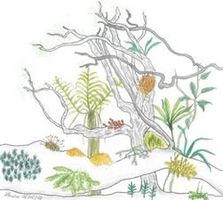
Echantillonnage des bryophytes
Une première sortie terrain a eu lieu à la Plaine des Fougères (55°31’05’’E ; 20°58’57’’S), le 26 avril, où j’ai pu récolter huit espèces de bryophytes de manière stratégique pour compléter des données et en fonction des espèces présentes {Image 1}.
Les échantillons ont été conservés au frais à la station forestière de recherche de Mare-Longue où ont eu lieu ensuite des expériences de laboratoires. Pour comprendre le déroulé de mes mesures il est important de savoir que les bryophytes sont des plantes chlorophylliennes réalisant la photosynthèse où elles convertissent l’énergie lumineuse en énergie chimique. Lors d’une perturbation, la dessiccation dans le cadre de cette étude, la dissipation de l’énergie lumineuse augmente. Cette dissipation peut être émise par les chloroplastes sous forme de lumière rouge connu sous le nom de fluorescence de la chlorophylle. Pour enregistrer le rendement de la fluorescence en cours de la dessiccation, j’ai utilisé un fluorimètre portable de modulation (Modèle MINI-PAM Potable Chlorophyll Fluorometer ; H. Walz, Effeltrich, Germany). J’ai adapté les échantillons à l’obscurité pendant 10 minutes, puis toutes les deux heures j’ai relevé des mesures de fluorescence jusqu’à ce que les échantillons soient entièrement secs. De plus, en parallèle, j’ai pour chaque temps mesuré la masse de chacun des échantillons afin de calculer par la suite leur teneur en eau en g H2O g-1 de masse sèche {Image 2}.


Cette expérience de dessiccation, m’a permis de représenter pour chacune de mes espèces de bryophytes (en plus de celles de Laura Figenschou), l’évolution de leur activité photosynthétique en fonction de leur teneur en eau. J’ai pu constater que, plus la plante perd de l’eau plus son activité photosynthétique diminue. Pour la suite j’ai estimé deux paramètres à partir de ces courbes, A pour la pente et B pour la dose létale médiane (DL50), la teneur en eau pour laquelle l’activité photosynthétique est réduite de moitié {Image 3}.
Suite à cette expérience de dessiccation, j’ai laissé une partie des échantillons à l’état sec pendant une semaine et l’autre partie pendant 7 semaines, puis j’ai réalisé des expériences de réhydratations des échantillons (3 et 4 mai ; 14 et 15 juin) à la station de recherche de mare Longue. J’ai pris trois mesures de fluorescence à 5 min, une heure et 24 heures suivant la réhydratation. Cette expérience a pour but d’observer comment les bryophytes vont récupérer ou non leur activité photosynthétique suite à une période de dessiccation plus ou moins longue et une réhydratation. J’ai en effet calculé le pourcentage de récupération de l’activité photosynthétique {Image 4}.
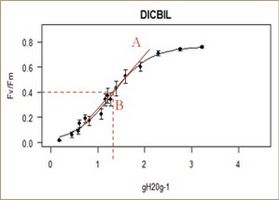
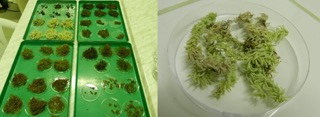
J’ai également participé à des vérifications de mesures de diamètres d’arbres de la forêt de Mare-Longue (2 et 3 juillet) dans le cadre du projet « Suivi de la bioDIVersité et INnovation pour l'acquisition des connaissances des EcoSystème naturels du bien classé patrimoine mondial à La Réunion » mené par Dominique Strasberg, enseignant-chercheur.
Louise Guérot